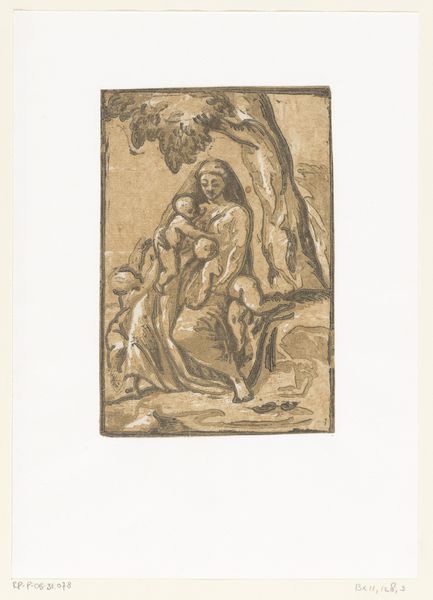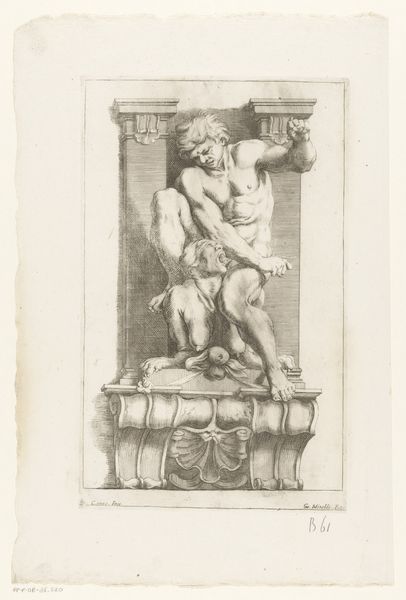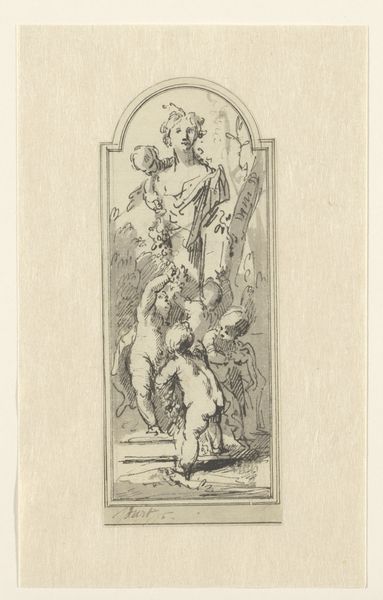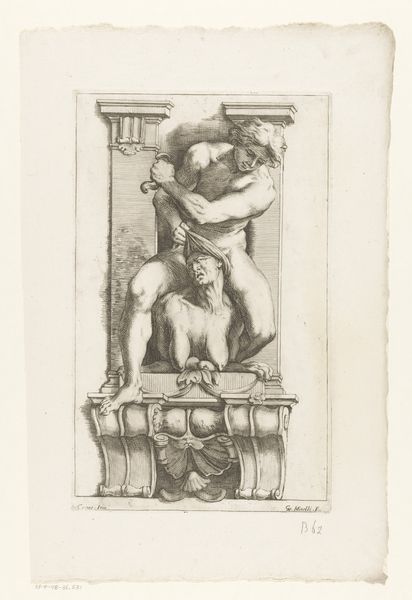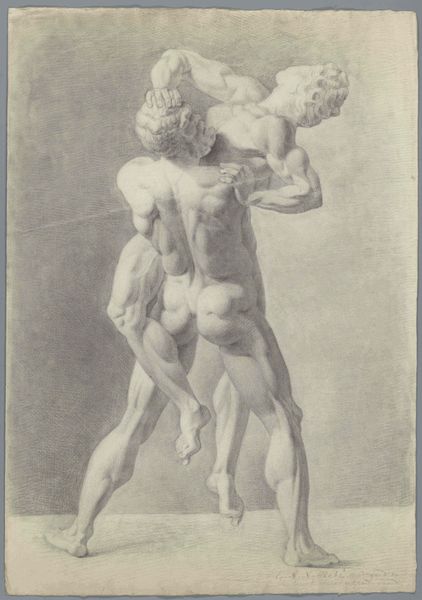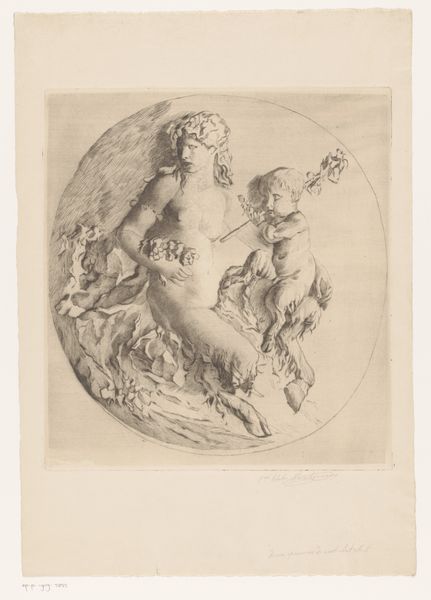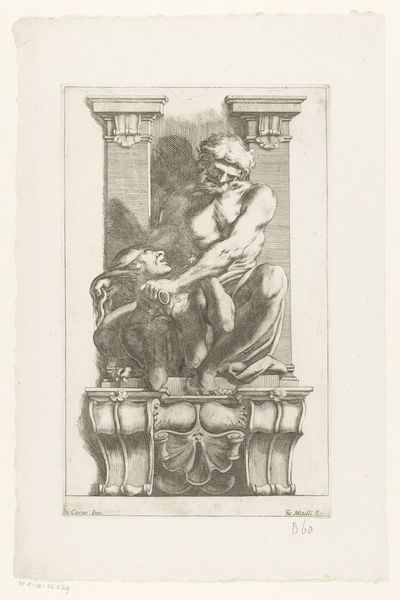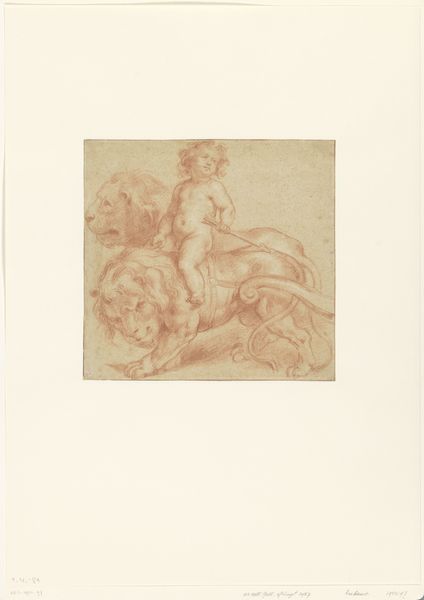
Venus met geblinddoekte Cupido, aan haar voeten een stier 1536 - 1569
0:00
0:00
print, engraving
#
allegory
#
ink paper printed
# print
#
old engraving style
#
white palette
#
mannerism
#
figuration
#
form
#
line
#
history-painting
#
italian-renaissance
#
nude
#
engraving
Dimensions: height 150 mm, width 94 mm
Copyright: Rijks Museum: Open Domain
Curator: The rendering is quite striking. I see stark lines and dynamic energy, but something about the execution feels a little unresolved. Editor: That's fair. This is "Venus with Blinded Cupid, at her Feet a Bull," an engraving by Georges Reverdy, made sometime between 1536 and 1569. It resides here at the Rijksmuseum. The medium itself, engraving, a rather painstaking and exacting process, undoubtedly shaped the aesthetic. Curator: Exactly! The very act of repeatedly scoring that metal plate—what material was likely used, copper or iron? And then all that intense pressure on the printing press to transfer the image to paper… you can feel the labor. It is also quite small. Editor: Certainly. It's important to consider the socio-political forces at play, too. Reverdy was operating in a period of intense religious and political upheaval, and while on the surface, we see a classical allegory, the inherent sensuality would not have been without societal context. Curator: Right. And that classicism is clearly filtered through Mannerism, what with the elongated limbs and stylized posing. Venus herself seems caught in a moment of self-awareness. It's far from a simple, idealized beauty. And Cupid being blinded; does that impact the viewing or even making, given vision as central for creation and consumption of art? Editor: Well, Cupid's blindness traditionally symbolizes the capricious and irrational nature of love. Its blindness might actually critique those in power. Then, we need to remember that printmaking allowed images and ideas to circulate more widely. Reverdy could be directly engaging with or challenging established artistic norms and social structures, spreading these messages more efficiently. Curator: The level of visual literacy expected of the audience then is also quite high. Someone commissioning or purchasing this would be intimately familiar with classical stories and iconography, which speaks volumes about the patronage system. Editor: True. And who controlled that system. Also who was it really serving with the visual tropes, or not? Curator: I now have even more appreciation of that push and pull within the work and artist. Editor: As do I. Thinking about its impact back then. The power it held.
Comments
No comments
Be the first to comment and join the conversation on the ultimate creative platform.

